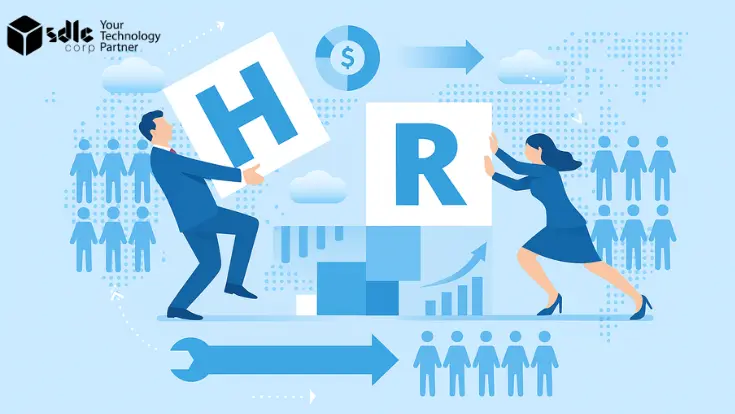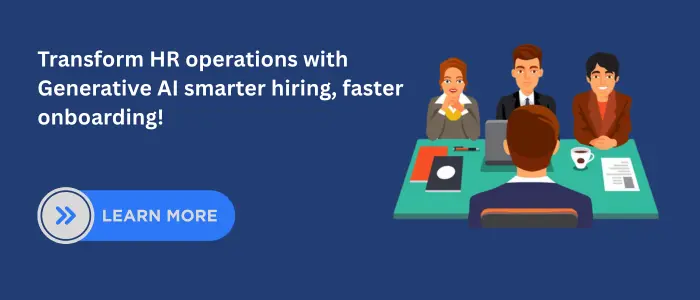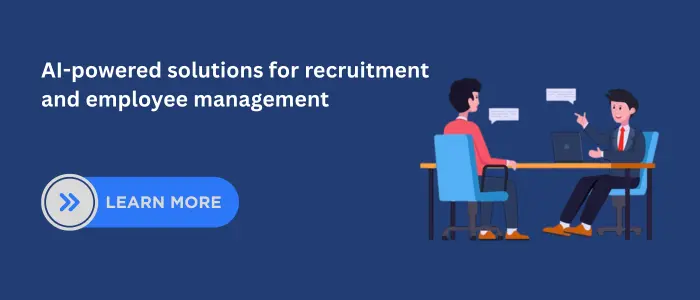Introduction
Human Resources (HR) is evolving rapidly. From recruitment to retention, companies face the challenge of managing a diverse, digital-first workforce. Traditional HR tools often fall short manual hiring processes, generic training modules, repetitive tasks, and outdated compliance systems reduce efficiency. This is where Generative AI for Human Resources steps in. By automating repetitive tasks,generating personalized content, and analyzing large datasets, AI in HR management empowers organizations to build smarter, faster, and more engaging employee experiences.
1. Recruitment and Talent Acquisition with Generative AI
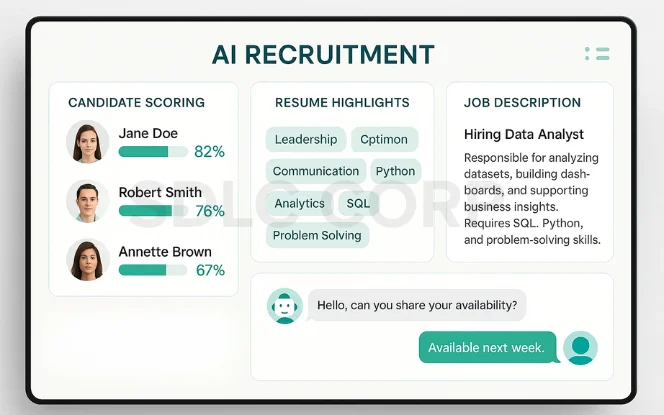
Hiring the right talent is one of the most critical yet resource-intensive tasks for organizations. Generative AI is transforming recruitment by automating repetitive tasks, improving candidate evaluation, and creating more engaging hiring experiences.
Applications of Generative AI in Recruitment
Automated Resume Screening with NLP
Natural Language Processing (NLP) quickly scans resumes, extracting skills, experiences, and qualifications that match job requirements. This significantly reduces the time spent on manual screening.
Candidate Scoring & Job Fit Analysis
AI systems evaluate candidates using predictive analytics, ranking them based on skills, cultural fit, and role-specific requirements, leading to more objective hiring decisions.
AI-Generated Job Descriptions
Generative AI tools create optimized, inclusive, and engaging job postings tailored to attract the right candidates. This also reduces bias in language and expands the applicant pool.
Chatbots for Pre-Screening Interviews
AI-powered chatbots conduct initial candidate conversations, asking basic questions about skills and availability while providing real-time feedback. This helps recruiters focus on high-potential applicants.
Impact of Generative AI in Recruitment
Faster and more efficient hiring processes.
Reduced human bias in candidate evaluation.
Improved candidate experience with timely, transparent interactions.
Better job-to-candidate matching, increasing retention rates.
Learn More : AI for Human Resources
2. Employee Engagement Powered by AI
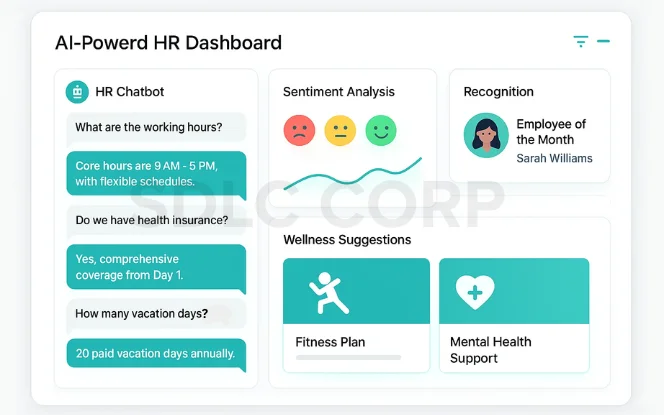
Employee engagement is vital for productivity, retention, and overall workplace culture. AI tools are enabling HR teams to provide personalized support, gather real-time feedback, and improve employee experiences across the organization.
Applications of AI in Employee Engagement
Chatbots for HR FAQs
AI-powered HR chatbots handle routine questions about leave policies, benefits, payroll, and company procedures. This gives employees instant support while reducing administrative workload for HR teams.
Real-Time Sentiment Analysis from Surveys
AI analyzes employee surveys, emails, and communication channels to gauge workplace sentiment. Leaders gain insights into morale, allowing timely interventions to prevent disengagement.
Personalized Wellness & Recognition Programs
AI platforms recommend personalized wellness resources from fitness plans to mental health support based on individual preferences. They also help managers recognize achievements through data-driven recognition systems.
Outcome of AI-Driven Engagement
Improved employee satisfaction and workplace culture.
Higher retention rates through proactive engagement.
Stronger sense of belonging, leading to increased productivity.
3. AI for Performance Reviews & Workforce Analytics
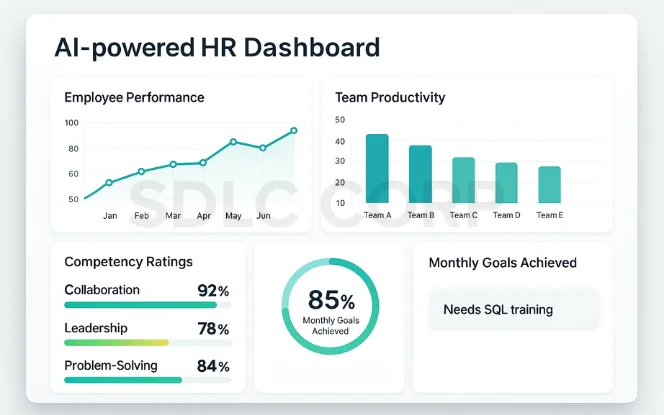
Performance reviews have traditionally been subjective and time-consuming, often influenced by bias or incomplete data. AI is transforming this process by delivering fairer, data-driven evaluations and helping organizations make better workforce decisions.
Applications of AI in Performance Management
Automated, Unbiased Performance Summaries
AI compiles employee performance data—from project outcomes to peer feedback—and generates structured summaries that minimize human bias.
Predictive Analytics for Promotions
Machine learning models identify high-potential employees by analyzing historical performance, skill growth, and leadership behaviors, guiding fairer promotion decisions.
AI Dashboards with Performance Metrics
Real-time dashboards track KPIs like productivity, collaboration, and project delivery, giving managers a clear, holistic view of employee contributions.
Skill-Gap Detection for Training Needs
AI analyzes employee skillsets against job requirements to detect gaps, enabling HR teams to recommend targeted training programs.
Value of AI-Driven Workforce Analytics
More objective and consistent performance evaluations.
Better career growth opportunities for employees.
Data-backed decisions that improve fairness and trust.
Proactive workforce planning aligned with business goals.
4. Generative AI for Training & Development
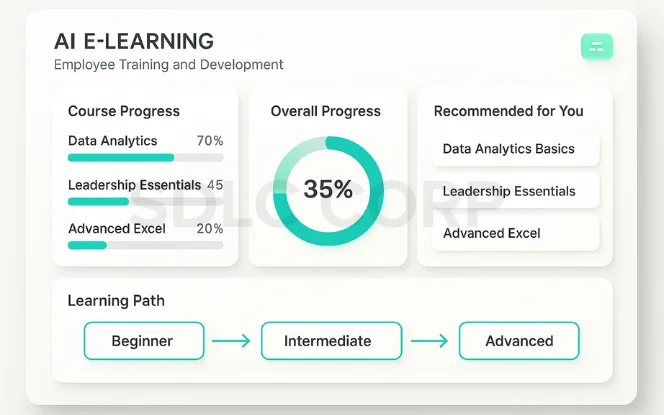
Continuous learning is critical in today’s fast-changing workplace. Generative AI is reshaping training and development by creating personalized learning experiences, automating content generation, and providing real-time coaching to employees.
Applications of Generative AI in L&D
Personalized Learning Paths
AI recommends tailored courses, modules, and certifications based on an employee’s role, career goals, and current skill levels.
AI-Generated Content, Quizzes & Coaching
Generative AI creates training materials, quizzes, and simulations in multiple formats, ensuring engaging and adaptive learning experiences.
Real-Time Feedback from Virtual Assistants
AI-powered learning assistants guide employees during training, offering instant feedback and clarifying doubts on the spot.
Skills Development Analytics
AI dashboards track progress, identify learning gaps, and measure the effectiveness of training programs to align with organizational needs.
Result of AI-Powered Training
Faster employee upskilling and reskilling.
Continuous learning culture within organizations.
Higher employee confidence and productivity.
5. HR Compliance & Policy Management with AI
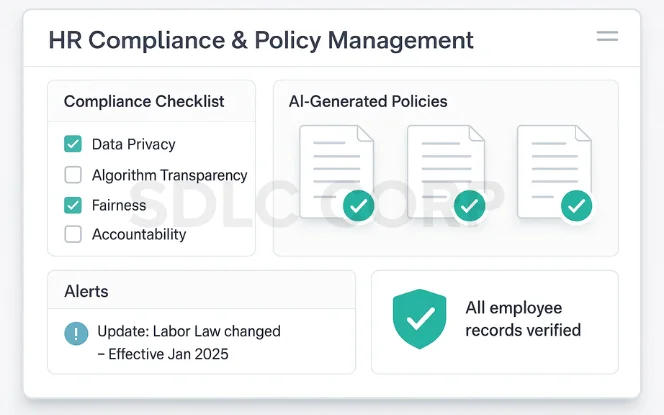
Compliance is one of the most sensitive areas in HR, as even small errors can lead to legal, financial, and reputational risks. AI is helping organizations simplify compliance by automating policy creation, monitoring regulations, and verifying documents with precision.
Applications of AI in HR Compliance
AI-Generated Policies & Contracts
Generative AI creates clear, standardized policies and employment contracts that align with local labor laws and company requirements.
Real-Time Alerts for Labor Law Changes
AI systems track global and regional labor regulations, sending alerts when laws change to ensure HR teams stay compliant.
Automated Compliance Checklists
Intelligent checklists guide HR teams through audits, onboarding, and workplace safety protocols, reducing the risk of missing key requirements.
Document Verification with AI
AI validates employee records, work permits, and other critical documents, flagging discrepancies instantly.
Benefit of AI in HR Compliance
Reduced compliance risks and errors.
Faster and more accurate policy updates.
Lower legal liabilities and stronger governance.
6. Case Study: AI in HR Transformation
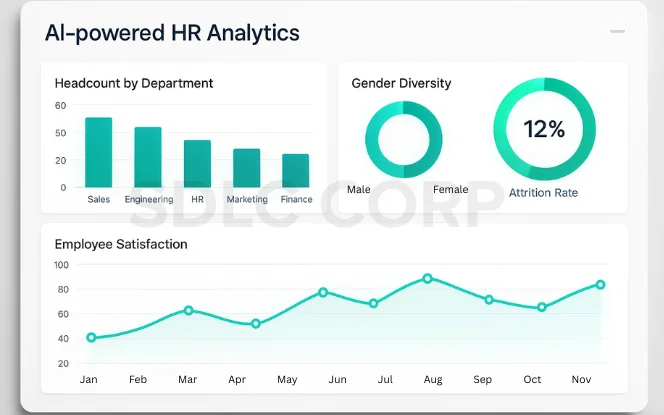
To understand the real-world impact of AI in HR, let’s look at the example of a multinational corporation that implemented AI-driven tools across its HR processes. By integrating generative AI, predictive analytics, and automation, the company was able to achieve measurable improvements in recruitment, compliance, employee engagement, and training.
Key Results Achieved
Recruitment Cycle Reduced by 50%
Automated resume screening, AI chatbots, and predictive candidate scoring helped the company cut its time-to-hire in half while improving the quality of candidates selected.
Employee Satisfaction Improved by 35%
Personalized wellness programs, AI-powered engagement surveys, and smarter feedback systems boosted morale and retention across the workforce.
Compliance Errors Reduced by 70%
AI-generated policies, automated compliance checklists, and real-time legal alerts ensured consistent policy adherence, significantly lowering compliance risks.
Training Completion Increased by 45%
Generative AI-created learning paths, virtual coaching assistants, and progress-tracking dashboards encouraged employees to complete training modules faster and more effectively.
Outcome
The integration of AI into HR created a more efficient, transparent, and employee-centric environment. By reducing repetitive workloads and providing data-driven insights, the company not only optimized its HR functions but also strengthened employee trust and long-term competitiveness.
7. Benefits of Generative AI in HR
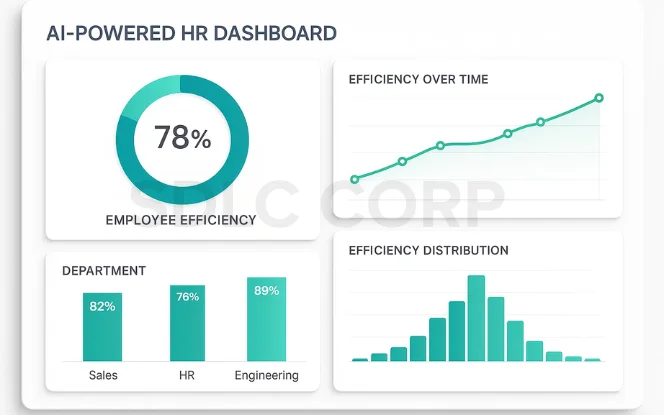
Generative AI is reshaping HR by making processes faster, fairer, and more engaging for employees. Below is a summary of its core benefits:
| Stage | AI Applications | Key Benefit | Example |
|---|---|---|---|
| Drug Discovery | Generative models, repurposing | Faster, cheaper R&D | Insilico’s AI drug → Phase II |
| Preclinical Research | Toxicity prediction, ADMET models | Safer pipeline, fewer failures | AI toxicity models cut attrition |
| Clinical Trials | Recruitment, adaptive design, monitoring | Faster, safer trials | AI cut recruitment time by ~30% |
| Manufacturing | Vision QA, predictive maintenance | Efficiency, compliance | Pfizer AI label inspection |
| Compliance | NLP docs, pharmacovigilance | Faster approvals, fewer errors | 80% of pharma use AI in governance |
| Supply Chain | Demand forecasting, cold chain alerts | Reduced waste, resilience | 69% use AI for cold chain monitoring |
| Marketing & Engagement | HCP targeting, adherence tracking | Better ROI, improved outcomes | 93% of marketers use AI |
8. Future of Generative AI in HR
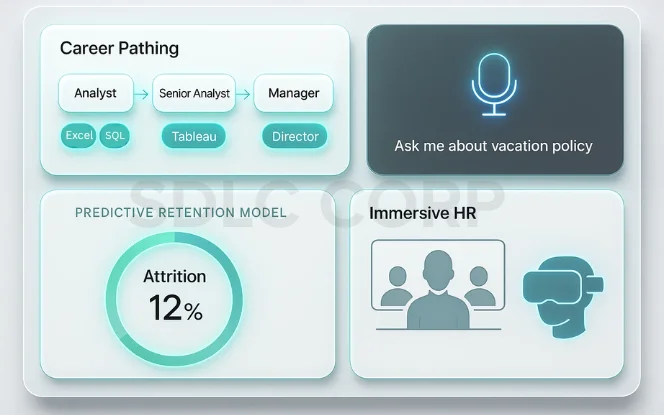
The next wave of AI in HR goes beyond automation, focusing on intelligent career growth, immersive employee experiences, and predictive workforce management. Generative AI will play a central role in shaping how employees interact with HR systems and how organizations plan for the future of work.
Key Future Trends
AI-Driven Career Pathing
Generative AI will map personalized career paths, suggesting role progressions, certifications, and skill development opportunities based on each employee’s goals and performance.
Voice-Enabled HR Assistants
Voice-powered AI will make HR support more intuitive, allowing employees to ask about policies, leave, or training through conversational, hands-free interactions.
Predictive Retention Models
AI will forecast attrition risks by analyzing sentiment, engagement, and performance data, enabling HR teams to take proactive measures to retain top talent.
Integration with Metaverse Workplaces
As virtual workplaces evolve, generative AI will create immersive onboarding programs, team-building activities, and collaboration spaces inside metaverse environments.
Related Blog : Enhancing HR & Recruitment Efficiency Using Odoo
Conclusion
Generative AI is reshaping HR end-to-end, from recruitment and training to compliance and employee engagement. By automating routine tasks and generating insights from workforce data, AI for Human Resources allows HR teams to operate more efficiently and strategically. Instead of focusing solely on administrative duties, HR leaders can now prioritize people-centric strategies such as career development, personalized training, and employee well-being. This shift elevates HR’s role as a driver of organizational growth and culture. The key insight is clear: AI is no longer just a support tool—it is transforming HR into a strategic partner for business success. Companies that adopt generative AI today gain a competitive edge in workforce efficiency, engagement, and retention. To stay future-ready, organizations must embrace AI-driven HR solutions, ensuring that employees thrive in smarter, more inclusive, and more engaging workplaces.
FAQs
What is Generative AI in HR?
It’s the use of AI to automate HR tasks such as recruitment, training, and compliance.
Can AI reduce hiring bias?
Yes, AI recruitment tools analyze candidate data objectively, reducing unconscious bias.
How does AI improve employee engagement?
AI chatbots, feedback systems, and wellness programs personalize the employee
experience.
Is AI suitable for small HR teams?
Yes. Even SMEs can use AI-powered HR tools for automation.
What’s the future of AI in HR?
It includes predictive career pathing, metaverse-based onboarding, and advanced
workforce analytics.

